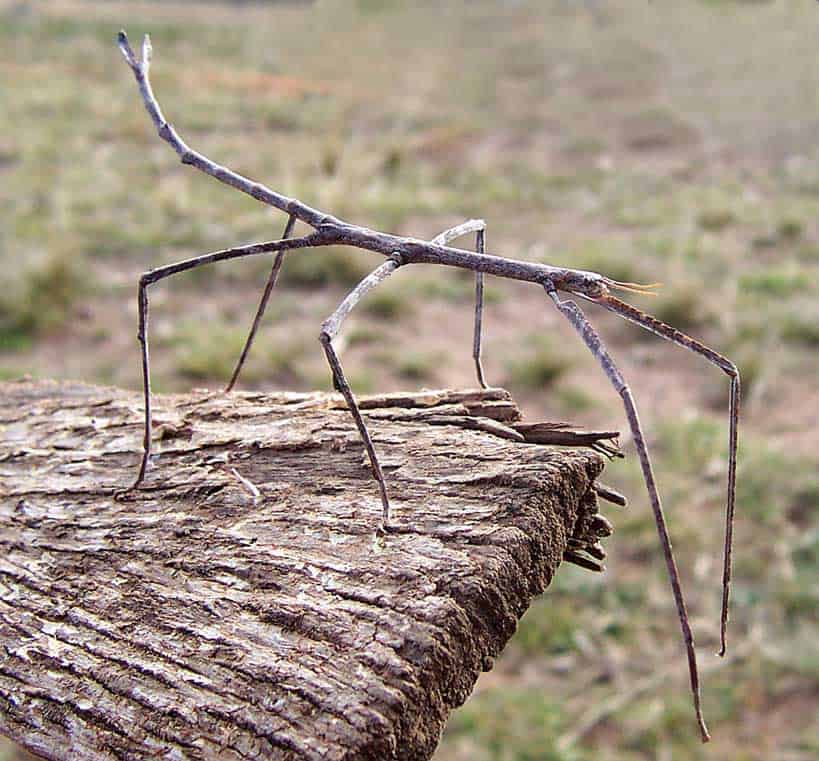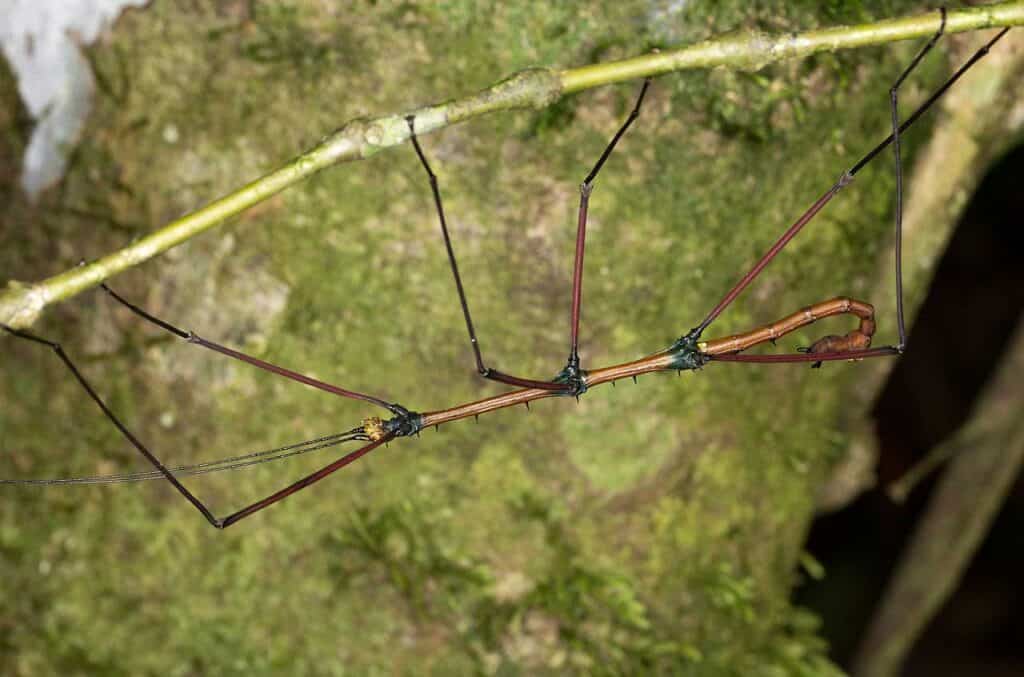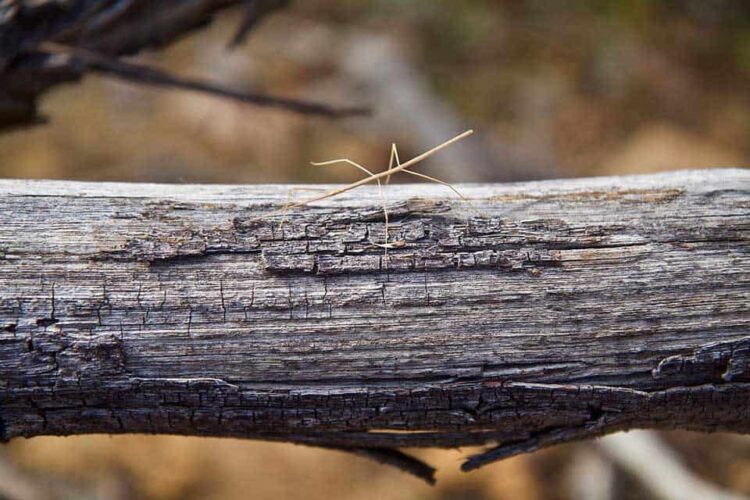Table of Contents
Can stick insects sleep at all?
This is one of the first questions new stick insect owners have. Which is swiftly followed by ‘when do stick insects sleep’? The truth is, we are not actually sure whether insects sleep at all. In all probability…
Stick insects do not sleep in the sense that humans understand it. Rather, they ‘rest’. And as stick insects are nocturnal by nature, they do most of their resting during the day, coming out of the rest state at night to feed on leaves.
by nature, they do most of their resting during the day, coming out of the rest state at night to feed on leaves.
It is an interesting topic that is still under study. But it’s far from a question of curiosity. Your stick insects still need time to rest.
In this guide I am going to discuss this highly intriguing subject.
For more advice and information on keeping and looking after stick insects, check out my ebook on Amazon click here
(opens in a new tab).

Do Stick Insects Sleep at All?
If you are an insect pet owner novice, the first thing you will notice when you look at your stick insects is that it never blinks. The reason for this is simple. It doesn’t have any eyelids like me and you (and all mammals) do.
So what we term as sleeping doesn’t apply to stick insects, or most of the insect world for that matter. Take the giant spiny stick insect as an example. It hails from Papua New Guinea and spends most of the day hiding under leaves and bark. This is when it’s resting, but it’s not actually sleeping.
But we do know that they rest because they are never active for 24 hours.

How Does the Rest Cycle Work in Stick Insects?
The short answer is we don’t actually know.
We know that stick insects have brains, but scientists have never been able to study stick insect brains , so we don’t know how brain activity differs when they are perceived to be resting.
, so we don’t know how brain activity differs when they are perceived to be resting.
So how do we know stick insects rest at all then?
That is an excellent question. The reason we know that they are resting is that tests have been carried out on what happens to insects when they do not get a chance to rest.
A colony of honey bees were deprived of the chance to rest in one study. These insomniac bees were then unable to perform their waggle dance . They couldn’t communicate with the rest of the colony and the colony later went on to fail because of that.
. They couldn’t communicate with the rest of the colony and the colony later went on to fail because of that.
Similar studies with other insects have produced similar results, so we can safely assume that stick insects do rest to avoid any effects of not resting.
Resting for Protection
Take the New Zealand Weta as an example. Also known as the world’s heaviest insect, the alpine variant lives at high altitudes and literally freezes at night due to the icy temperatures of their environment. But they evolved to survive these temperatures, so they curl up and allow themselves to be frozen until they thaw out when the weather changes.
Insects do not always rest just because they need to recover though. Often times they do so because they are protecting themselves. It all depends on the environment the stick insect is used to.
Many stick insects ‘rest’ to simply avoid predators. They’re not resting, for example, because they need to protect themselves from extreme conditions.
We mention that to point out this: insects of all kinds will rest for three reasons: recovery, protection against predators, and to survive the elements.
What is ‘Resting’ to a Stick Insect?
It might seem like a strange question to ask, but it’s a valid one. The definition of ‘resting’ for a stick insect differs to other insects. Indeed, there are a number of scenarios where your pet will become inactive.
The first is simply its natural hibernation throughout the day. If there’s strong sunlight shining on the tank, for example, you have little chance of finding your stick insect as it will be hiding somewhere cool, possibly under a leaf or branch.
The second scenario is when your stick insects are mating. This is a process that can go on for weeks. The male and the female are literally connected to each other and will not do much of anything else. The female can lay an egg every single day, but the chances are they won’t be out in the open.

The third scenario is when your stick insects are shedding their skin . They will be hanging upside
. They will be hanging upside down and, for a while, will not appear to be doing much of anything.
down and, for a while, will not appear to be doing much of anything.
Shedding is slow and requires a lot of effort for an insect to enter its next growth stage as it’s literally pulling its body out of its skin.
So resting, as we know it for a human, is not necessarily the same as for an insect. It could be about protection or it could be about a process like growth or reproduction.
So, When Do Stick Insects Sleep?
Stick insects will rest during the day. Evolution has determined this because stick insects are always more active at night when they’re harder to spot by predators.
Pet stick insects are very much the same, but they are more likely to come out during the day, so there’s no need for you to stay up late to view them. But you could easily keep them in a dark room so that they think that it is at night. At the very least, it will give them the confidence to come out.
Just make sure that when you do this you’re not taking away the humidity they need to shed their skin.
How Should You Help Your Stick Insect Sleep?
It’s important when setting up your stick insect tank for you to prepare an area where your stick insects can retreat to for rest.
It doesn’t have to be anything fancy. Select a corner of the tank and pile some leaves or bark in the corner. This should be replaced on a semi-regular basis due to the risk of fungal infection.
Unlike when feeding your stick insects, you can afford to use dead leaves as a cover. This will allow you to avoid needing to replace the coverings every day; every few days should be sufficient.
Some stick insect owners will tell you that it’s not necessary to use living matter as a shelter for your pets. But if you want it to resemble a stick insect’s natural environment as closely as possible, you should put in the extra effort.
It’s true that stick insects are generally not picky about what they use to rest under, but they do prefer vegetation.
You may be able to use a small covered box or other dark place and your stick insects will be perfectly happy, but we still recommend using bark and/or leaves.
Last Word – So When Do Stick Insects Sleep?
The answers in this article may have surprised you. Sleep as we know it doesn’t apply to insects in general.
Instead, insects are simply resting. They’re always alert and can react to predators and new food sources extremely quickly. There’s no doubt that stick insects do need rest, though.
So just make sure that you set up your tank so that there is a dark place for your stick insects to rest in. Vegetation is best, but if you do not like the idea of replacing it on a semi-regular basis, you can use a simple box.

